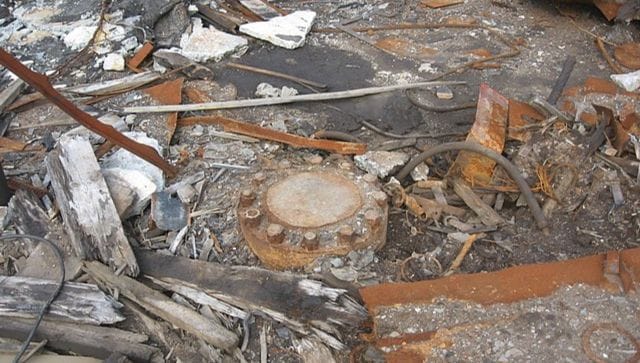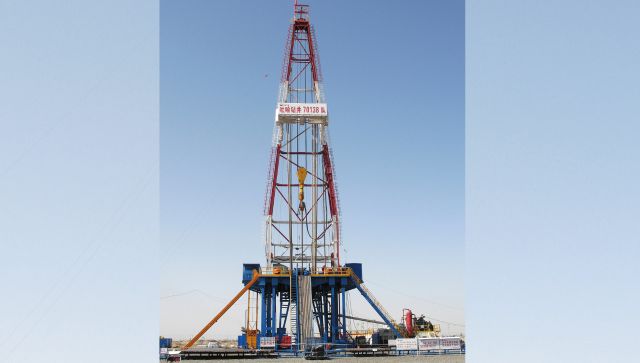China has started drilling over a 10,000-meter (32,808 feet) hole in the Earth’s crust. As per Xinhua News Agency, the operation to dig the country’s deepest-ever borehole was launched on Tuesday (30 May) in the Tarim Basin, located in the oil-rich Xinjiang region. But what is the motive behind the expedition? Let’s take a closer look. Why is China digging the hole? To carry out scientific exploration. According to Xinhua News Agency, the undertaking “represents a landmark in China’s deep Earth exploration, providing an unprecedented opportunity to study areas of the planet deep beneath the surface.” Earlier in 2021, Chinese president Xi Jinping had pushed for advancement in deep Earth exploration while addressing the country’s leading scientists, as per a Bloomberg report. This expedition can help scientists unearth rich minerals and energy resources. Moreover, it can also be beneficial for evaluating the risks of environmental disasters, including earthquakes and volcano eruptions, the report added.
The news of this new venture comes just days after the Asian nation finished building a 12,000-tonne offshore oil and gas drilling platform to mine geological reserves of natural gas, reported Interesting Engineering. Notably, the demand for petrol and jet fuel has increased in China after the scrapping of the zero-COVID-19 policy last December. As per Reuters, Beijing is likely to import a record quantity of crude oil this year amid the huge demand. How will the drilling work? The drill has a design depth of 11,100 meters, reported Xinhua. The 2,000-tonne heavy equipment, which has drill bits and drill pipes, will drill into the ground, penetrating over 10 continental strata – or layers of rock, the report added. The drilling also aims to reach the Cretaceous system, which has rocks dating back 145 million years, noted Bloomberg. What are the challenges? The drilling process can have its own challenges as the borehole is being dug in the Tarim Basin, which, as per Britannica, is a vast depression drained by the Tarim River. In the centre of this basin lies the Taklimakan Desert – the largest desert in China – which spans over an area of 342,000 square km. This borehole is located in the hinterland of this desert, reported Xinhua. Owing to the “harsh ground environment and complicated underground conditions” in the Tarim Basin, drilling such a deep hole into the Earth’s crust will not be a piece of cake. Explaining the challenges of the project, Sun Jinsheng, an academician at the Chinese Academy of Engineering, told Xinhua: “The construction difficulty of the drilling project can be compared to a big truck driving on two thin steel cables”. ALSO READ: Scientists in Arctic race to start drilling to preserve ‘ice memory’ The deepest hole ever dug Even though digging a 10-kilometre hole is ambitious, it is not the deepest human-made hole on Earth.
That title still belongs to the Russian Kola Superdeep Borehole, which was dug over a period of 20 years.
The drilling process began in 1970 and the borehole reached a depth of 12,262 meters (40,230 feet) in 1989. The work had to be stopped in 1992 when the temperature reached 180C (356F), which was twice the expected mercury at that depth, as per a BBC report. [caption id=“attachment_12676912” align=“alignnone” width=“640”] Kola Superdeep Borehole is the deepest man-made hole on Earth. Wikimedia Commons File Photo[/caption] With the collapse of the Soviet Union and the dearth of money for such exploration projects, the facility was shut down three years later, the report added. Americans had begun Project Mohole, aimed at drilling through the Earth’s crust to reach and explore the mantle, in the early 1960s. They dug through the Pacific Ocean floor off Guadalupe, Mexico. However, after reaching 183 metres beneath the seafloor, the project was called off due to its skyrocketing costs. Germany also tried its hand at Earth exploration with the German Continental Deep Drilling Program (KTB) in Bavaria in 1990, which arrived at a depth of 9 km. This project was also eventually closed. Uli Harms of the International Continental Scientific Drilling Program told BBC in 2019 that continuing these expeditions need a large amount of money. “In the end, it really is a cost issue. These expeditions are extremely expensive – and therefore they are difficult to repeat. They can cost hundreds of millions of euros – and only a small percentage will actually be for the earth sciences, the rest will be for technological development, and of course, operations.” That day still seems far when all these challenges can be overcome and humans are finally able to explore the Earth’s mantle. But scientists are hopeful. With inputs from agencies Read all the
Latest News
,
Trending News
,
Cricket News
,
Bollywood News
, India News
and
Entertainment News
here. Follow us on
Facebook
,
Twitter
and
Instagram
.
Kola Superdeep Borehole is the deepest man-made hole on Earth. Wikimedia Commons File Photo[/caption] With the collapse of the Soviet Union and the dearth of money for such exploration projects, the facility was shut down three years later, the report added. Americans had begun Project Mohole, aimed at drilling through the Earth’s crust to reach and explore the mantle, in the early 1960s. They dug through the Pacific Ocean floor off Guadalupe, Mexico. However, after reaching 183 metres beneath the seafloor, the project was called off due to its skyrocketing costs. Germany also tried its hand at Earth exploration with the German Continental Deep Drilling Program (KTB) in Bavaria in 1990, which arrived at a depth of 9 km. This project was also eventually closed. Uli Harms of the International Continental Scientific Drilling Program told BBC in 2019 that continuing these expeditions need a large amount of money. “In the end, it really is a cost issue. These expeditions are extremely expensive – and therefore they are difficult to repeat. They can cost hundreds of millions of euros – and only a small percentage will actually be for the earth sciences, the rest will be for technological development, and of course, operations.” That day still seems far when all these challenges can be overcome and humans are finally able to explore the Earth’s mantle. But scientists are hopeful. With inputs from agencies Read all the
Latest News
,
Trending News
,
Cricket News
,
Bollywood News
, India News
and
Entertainment News
here. Follow us on
Facebook
,
Twitter
and
Instagram
.
)